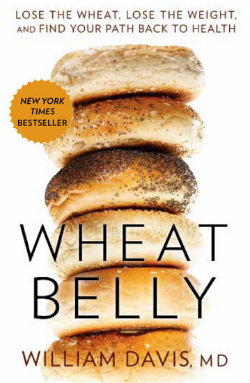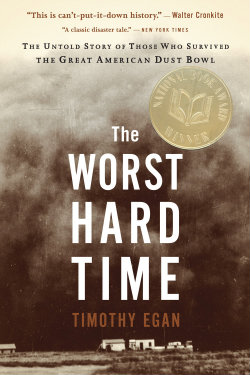Okay, here’s a threefer. You’ve probably figured out by now that I’m generally not a nonfiction reader, though I seem to have turned a 180, or at least a 90, since half of my last six books haven’t been “fake” (as my seventh-graders called fiction Back in the Day). I’m combining them into one big post because (1) I don’t have very much to say about them and (2) it’s almost the end of the year, and I’m a little burnt out since I’m well past the 50 mark now. There’s also a book of Billy Collins’s poetry that I read sometime around the middle of the year and am not including, but that’s neither here nor there.
So, in the order that I read them, and briefly:
 Wheat Belly is about how terrible wheat is for you. Over the past fifty, or so years, it’s become so genetically modified that it does terrible things to the human body. Don’t eat it. I read Wheat Belly because I went gluten-free for two weeks, and I needed encouragement. It makes a lot of sense: it raises blood sugar really quickly and causes various types of irritation. Two weeks wasn’t too bad, but it was very expensive and didn’t make a lick of difference for me, so I’m back on the wheat. Davis approaches it from the perspective of losing weight, and that makes sense, too, but while losing a few pounds wouldn’t hurt me, I was more interested in what wheat does to my stomach. He also makes lots of unfunny jokes and makes too many derogatory remarks about overweight people. I gave it three stars on Goodreads because I learned a lot, and it kept my interest.
Wheat Belly is about how terrible wheat is for you. Over the past fifty, or so years, it’s become so genetically modified that it does terrible things to the human body. Don’t eat it. I read Wheat Belly because I went gluten-free for two weeks, and I needed encouragement. It makes a lot of sense: it raises blood sugar really quickly and causes various types of irritation. Two weeks wasn’t too bad, but it was very expensive and didn’t make a lick of difference for me, so I’m back on the wheat. Davis approaches it from the perspective of losing weight, and that makes sense, too, but while losing a few pounds wouldn’t hurt me, I was more interested in what wheat does to my stomach. He also makes lots of unfunny jokes and makes too many derogatory remarks about overweight people. I gave it three stars on Goodreads because I learned a lot, and it kept my interest.
 Next up was The Worst Hard Time, which is a fantastic history of the Dust Bowl, told in personal stories of the people who lived through it (instead of moving to California like the family in The Grapes of Wrath, who didn’t really fare any better). Around 1900, the government lied to get people to move out to West Texas, Oklahoma, and Kansas, saying that the soil was perfect for farming. They moved out in droves and planted wheat until there was so much of it that prices dropped, so they planted more. In the process, they plowed up all of the prairie grass, and after a few years of drought, the soil turned to dust and blew across the whole country in terrible storms, some of which even reached Washington, D.C. The book is really well-written and soooo interesting.
Next up was The Worst Hard Time, which is a fantastic history of the Dust Bowl, told in personal stories of the people who lived through it (instead of moving to California like the family in The Grapes of Wrath, who didn’t really fare any better). Around 1900, the government lied to get people to move out to West Texas, Oklahoma, and Kansas, saying that the soil was perfect for farming. They moved out in droves and planted wheat until there was so much of it that prices dropped, so they planted more. In the process, they plowed up all of the prairie grass, and after a few years of drought, the soil turned to dust and blew across the whole country in terrible storms, some of which even reached Washington, D.C. The book is really well-written and soooo interesting.
 Finally, there’s World War One: A Short History by Norman Stone. I didn’t know much about World War 1, and I figured that short was the way to go. That’s not entirely accurate: to keep the length down, Stone just had to rattle off historical facts rather than exploring their causes in any detail. So now I have an idea of what happened during World War 1 but only a vague one about why. Which means I need to read a longer, more in-depth book about it. This book is like a dry, extended Wikipedia article, and it’s best virtue is that it’s such a quick read. I probably would have gotten bored and given up otherwise.
Finally, there’s World War One: A Short History by Norman Stone. I didn’t know much about World War 1, and I figured that short was the way to go. That’s not entirely accurate: to keep the length down, Stone just had to rattle off historical facts rather than exploring their causes in any detail. So now I have an idea of what happened during World War 1 but only a vague one about why. Which means I need to read a longer, more in-depth book about it. This book is like a dry, extended Wikipedia article, and it’s best virtue is that it’s such a quick read. I probably would have gotten bored and given up otherwise.
I don’t know what got me interested in nonfiction all of the sudden. Next up, I think, might be a history of the Cold War because it’s always fascinated me. For right now, though, I’m back to fiction and breaking up my most recent tear with a long one, The Magus by John Fowles, which should take me a while. And I’m still one book behind on this blog, but I’ll get to that soon.
Bonus: Thanksgiving was a couple of days ago. More importantly, it’s Christmas season, and Palmer and I went on our annual voyage to get a Christmas tree. This year, he documented our adventure in a Youtube video, which I present here for your amusement.